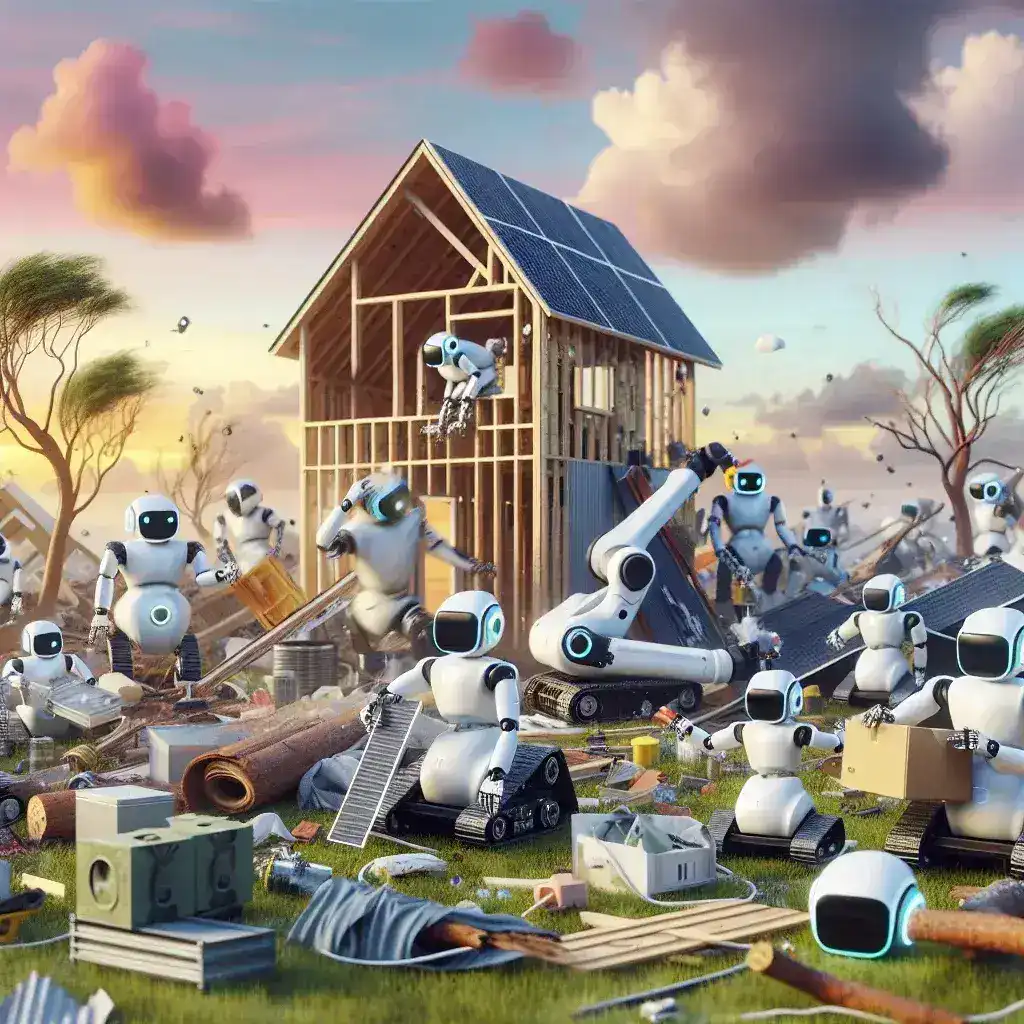The Rise of Robotic AI Systems in Post-Disaster Housing
In recent years, the United States has faced a series of devastating hurricanes, leaving a trail of destruction and displacement. Traditional methods of disaster recovery and housing construction often fall short in meeting the urgent needs of affected communities. Enter robotic AI systems and their revolutionary approach to building 3D printed houses—a solution that not only promises speed and efficiency but also addresses the challenges posed by natural disasters.
A Brief History of Hurricane Impact on Housing
Historically, hurricanes such as Hurricane Katrina in 2005 and Hurricane Sandy in 2012 highlighted significant shortcomings in disaster response, particularly in housing. Millions of people were displaced, and the slow recovery process often meant years of uncertainty for those affected. Traditional construction methods are typically labor-intensive and time-consuming, making it difficult to provide quick shelter solutions in the aftermath of such disasters.
Emerging Technologies in Construction
As technology advances, so too does the potential for innovative solutions to address housing crises. 3D printing technology has emerged as a viable alternative, allowing for the rapid construction of homes using less labor and materials. The integration of robotic AI systems into this process is the next step in revolutionizing how we think about and respond to housing needs after disasters.
How Robotic AI Systems Work
Robotic AI systems utilize a combination of robotics, artificial intelligence, and advanced materials to create housing structures quickly and efficiently. Here’s a breakdown of how these systems operate:
- Design: Architects and engineers create digital blueprints of homes tailored to the needs of the community.
- Material Selection: Eco-friendly materials, often derived from recycled products, are chosen to minimize environmental impact.
- 3D Printing: Robotic arms equipped with 3D printing technology layer the materials to form the structure, executing the plans with precision.
- AI Optimization: AI algorithms optimize the construction process, monitoring progress in real-time and making adjustments as needed.
Advantages of 3D Printed Houses
There are numerous advantages to constructing homes using robotic AI systems and 3D printing technology:
- Speed: 3D printed houses can be constructed in a fraction of the time compared to traditional methods, allowing for immediate post-disaster recovery.
- Cost-Effectiveness: Reduced material waste and lower labor costs make 3D printing a budget-friendly option for rebuilding efforts.
- Durability: The materials used in 3D printing can be designed to withstand extreme weather conditions, enhancing resilience.
- Customization: Each home can be tailored to the specific needs of the inhabitants, ensuring functionality and comfort.
Real-World Applications
Several organizations and companies have begun implementing robotic AI systems to build 3D printed houses in areas affected by hurricanes. For example, ICON, a construction technology company, has successfully completed projects in disaster-stricken areas, showcasing the potential of this technology. Their partnership with non-profit organizations has led to the construction of affordable housing solutions in record time.
Case Study: The Houston Recovery Efforts
After Hurricane Harvey in 2017, Houston faced a significant housing crisis. Traditional rebuilding efforts lagged, leading to increased demand for innovative solutions. ICON stepped in to demonstrate how robotic AI systems could expedite the process. In a matter of weeks, they constructed several 3D printed homes, offering a glimpse into the future of disaster recovery.
Challenges and Considerations
While the advantages of robotic AI systems and 3D printing are clear, there are challenges to consider:
- Regulatory Hurdles: Building codes and regulations may not yet accommodate 3D printed structures, necessitating changes to legislation.
- Public Perception: There may be skepticism regarding the durability and safety of 3D printed homes, requiring education and outreach efforts.
- Initial Costs: While operational costs may decrease, the initial investment in technology and training can be significant.
The Future of Housing After Disasters
As climate change continues to exacerbate the frequency and intensity of hurricanes, the demand for efficient, resilient housing solutions will only grow. Robotic AI systems and 3D printing offer a promising avenue for addressing these challenges. With advancements in technology, the potential for widespread adoption and scalability is within reach, allowing communities to rebuild faster and more sustainably.
Conclusion: Embracing Innovation
In conclusion, the integration of robotic AI systems in building 3D printed houses after U.S. hurricane disasters represents a significant leap forward in disaster recovery efforts. By leveraging technology, communities can respond more effectively to natural disasters, ensuring that individuals and families have access to safe, durable housing in the wake of destruction. The future of construction lies in innovation, and with continued investment and support, 3D printed homes could become a standard solution for rebuilding efforts across the nation.

